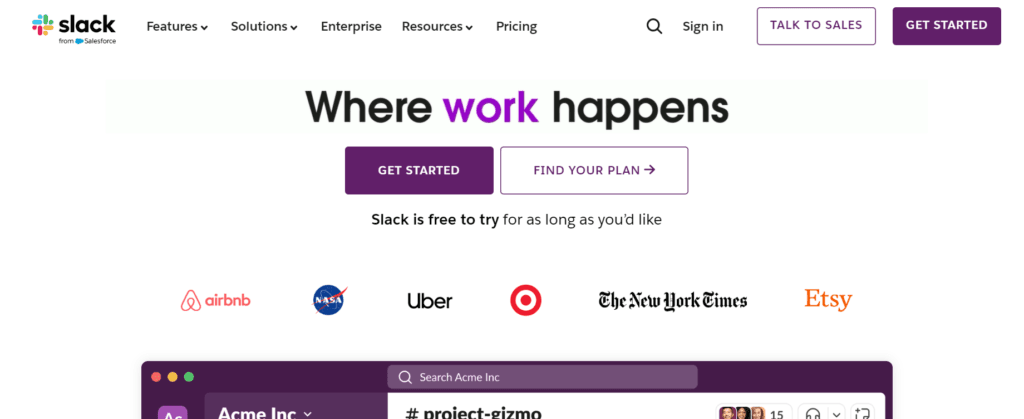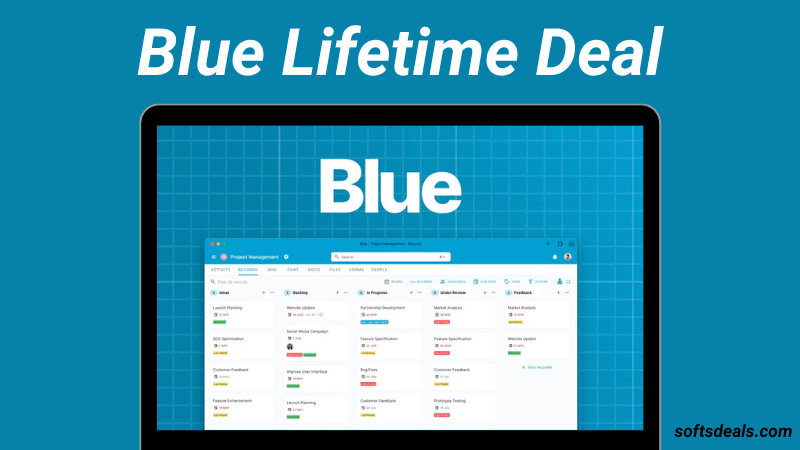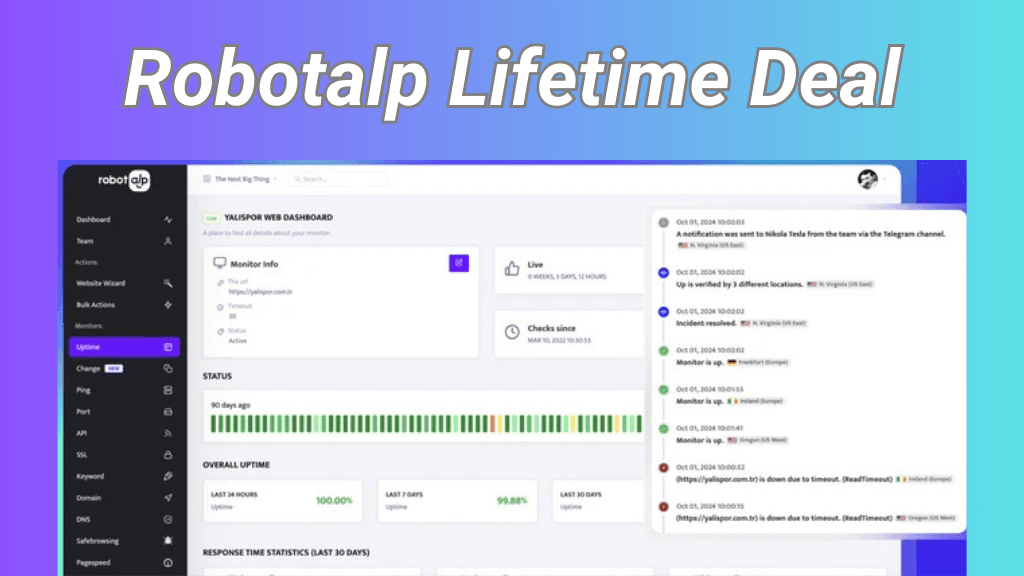Effective teamwork is crucial for success in today’s digital world. The Best Collaboration platforms help teams work smarter and more efficiently.
Teams need the right tools to stay connected and productive. With countless options available, choosing the best collaboration platform can be challenging. These platforms offer various features, from file sharing to video conferencing, making teamwork seamless. They bridge communication gaps, ensuring everyone stays on the same page.
This guide explores top collaboration platforms, helping you find the best fit for your team. Stay tuned to discover tools that enhance productivity and foster better teamwork.
Top Features To Look For
Collaboration platforms have become essential tools for teams working together. Choosing the right platform can significantly impact productivity and efficiency. There are several features to consider when selecting the best collaboration platform. In this post, we will discuss the top features to look for.
User Interface
A user-friendly interface is crucial for any collaboration platform. Users should be able to navigate the platform easily and perform tasks without confusion. Here are some key aspects to consider:
- Simplicity: The design should be clean and straightforward.
- Accessibility: Easy access to different tools and features.
- Customizability: Options to personalize the interface based on user preferences.
- Mobile-Friendly: The platform should work well on mobile devices.
A well-designed user interface can reduce the learning curve and help teams get up to speed quickly. Here’s a table highlighting some platforms known for their excellent user interfaces:
| Platform | User Interface Rating |
|---|---|
| Slack | 4.8/5 |
| Microsoft Teams | 4.7/5 |
| Asana | 4.6/5 |
Integration Capabilities
Integration capabilities determine how well the platform works with other tools and software. This feature is essential for seamless workflows. Consider the following:
- Third-Party Apps: Ability to integrate with popular third-party applications.
- APIs: Availability of APIs for custom integrations.
- Single Sign-On (SSO): Support for SSO to streamline login processes.
- Data Sync: Ensuring data synchronization across platforms.
Platforms with robust integration capabilities can save time and reduce the need for manual data entry. Here’s a list of some popular integrations:
- Google Workspace
- Microsoft Office 365
- Zapier
- Trello
- Salesforce
Security Measures
Security is a top priority for any collaboration platform. Protecting sensitive information and ensuring secure communication is vital. Key security features to look for include:
- Encryption: End-to-end encryption for data protection.
- Two-Factor Authentication (2FA): Additional layer of security for user accounts.
- Access Controls: Ability to set permissions and control access.
- Compliance: Adherence to industry standards and regulations (e.g., GDPR, HIPAA).
Ensuring the platform has strong security measures can prevent data breaches and unauthorized access. Below is a table showcasing platforms with notable security features:
| Platform | Security Rating |
|---|---|
| Zoom | 4.9/5 |
| Google Meet | 4.8/5 |
| Basecamp | 4.7/5 |
Popular Collaboration Tools
Collaboration tools have become essential in today’s work environment. They help teams communicate, share files, and manage projects. With many options available, finding the right one can be overwhelming. Below, we explore three popular collaboration tools that can boost your team’s productivity.
Slack

Slack is a messaging app for teams that brings all your communication together. It offers a variety of features to make collaboration easy and efficient.
Key features include:
- Channels: Organize conversations by topic, project, or team.
- Direct Messages: Send private messages to individuals.
- Integrations: Connect with tools like Google Drive, Trello, and Asana.
Slack also supports file sharing, voice, and video calls. The interface is user-friendly, making it easy for everyone to stay connected.
Here’s a quick overview of Slack’s pricing plans:
| Plan | Price per Month | Features |
|---|---|---|
| Free | $0 | 10,000 messages, 10 integrations |
| Standard | $6.67 | Unlimited messages, unlimited integrations |
| Plus | $12.50 | Advanced features, priority support |
Microsoft Teams

Microsoft Teams is a robust collaboration platform that integrates seamlessly with Office 365. It is designed for businesses of all sizes.
Key features include:
- Channels and Teams: Create dedicated spaces for different projects or departments.
- Meetings and Calls: Schedule and join meetings directly within the app.
- File Sharing: Share and co-edit documents in real-time.
Teams also offers extensive security features to protect your data. It supports third-party integrations and custom apps to enhance functionality.
Here’s a look at Microsoft Teams’ pricing plans:
| Plan | Price per Month | Features |
|---|---|---|
| Free | $0 | Chat and collaboration, 5GB storage |
| Business Basic | $5.00 | Full access to Office apps, 1TB storage |
| Business Standard | $12.50 | Advanced meeting features, more storage |
Zoom

Zoom is a video conferencing tool that has gained popularity due to its ease of use and reliable performance. It is ideal for remote work and virtual meetings.
Key features include:
- Video and Audio Calls: Host HD video and audio meetings.
- Webinars: Conduct webinars with up to 10,000 attendees.
- Screen Sharing: Share your screen with participants during meetings.
Zoom also offers breakout rooms, virtual backgrounds, and meeting recordings. Its user-friendly interface makes it accessible for all users.
Here’s a breakdown of Zoom’s pricing plans:
| Plan | Price per Month | Features |
|---|---|---|
| Basic | $0 | 40-minute meetings, 100 participants |
| Pro | $14.99 | 24-hour meetings, 1GB cloud recording |
| Business | $19.99 | 300 participants, admin dashboard |
Benefits Of Collaboration Platforms
In today’s fast-paced work environment, collaboration platforms are essential. They help teams work together, share ideas, and achieve goals. These tools offer various benefits that can enhance the workflow and productivity of any team. Below, we’ll explore the key benefits of collaboration platforms.
Increased Productivity
Collaboration platforms significantly boost productivity. They provide a centralized space where team members can access documents, share updates, and track progress. This reduces the time spent searching for information.
These platforms often come with features like:
- Task Management: Assign tasks, set deadlines, and track progress.
- Document Sharing: Easily share and edit documents in real-time.
- Automation: Automate repetitive tasks to save time.
Using a collaboration platform can lead to:
| Benefit | Description |
|---|---|
| Reduced Email Overload | Communicate within the platform instead of lengthy email threads. |
| Faster Decision-Making | Access to all necessary information in one place. |
| Improved Task Management | Visualize tasks and deadlines, reducing missed tasks. |
Overall, these tools streamline workflows and help teams focus on what matters most.
Improved Communication
Effective communication is vital for any team’s success. Collaboration platforms enhance communication by providing multiple channels for interaction. Team members can use chat, video calls, and discussion boards.
Key communication features include:
- Instant Messaging: Quick and direct communication with team members.
- Video Conferencing: Virtual meetings to discuss projects face-to-face.
- Discussion Boards: Dedicated spaces for topic-specific conversations.
These features help in:
| Aspect | Impact |
|---|---|
| Clarity | Clearer understanding of tasks and expectations. |
| Feedback | Quick feedback and resolution of issues. |
| Engagement | Increased team engagement and collaboration. |
With better communication, teams can work more effectively and avoid misunderstandings.
Remote Work Support
Remote work is becoming more common. Collaboration platforms support remote work by providing the tools needed to stay connected and productive.
These platforms offer:
- Cloud Storage: Access files from anywhere, at any time.
- Remote Access: Work from any device with an internet connection.
- Real-Time Collaboration: Edit documents and projects simultaneously with team members.
Benefits of remote work support include:
| Benefit | Description |
|---|---|
| Flexibility | Work from anywhere, leading to a better work-life balance. |
| Cost Savings | Reduced need for office space and related expenses. |
| Diverse Talent Pool | Access to talent from different geographic locations. |
These tools ensure that remote teams can collaborate just as effectively as in-office teams.
Choosing The Right Platform
Choosing the right collaboration platform for your team can be a challenge. It depends on various factors including team size, project type, and budget constraints. Making the right choice can improve productivity and ensure smooth workflow. Let’s explore the key considerations for selecting the best platform for your needs.
Team Size Considerations
The size of your team plays a crucial role in choosing a collaboration platform. Different platforms cater to different team sizes.
- Small Teams: If your team has fewer than 10 members, a simple tool like Slack or Trello might suffice. These platforms offer basic features and are easy to use.
- Medium Teams: For teams with 10-50 members, consider platforms like Asana or Monday.com. These provide more advanced features and better project management capabilities.
- Large Teams: Teams with over 50 members need robust platforms like Microsoft Teams or Jira. These tools offer extensive features, integrations, and scalability.
Consider the growth potential of your team. Opt for a platform that can scale with your team size without requiring a switch to a new tool.
Project Type
The nature of your project influences the choice of collaboration platform. Different projects require different features and capabilities.
- Creative Projects: For design and content creation projects, tools like Miro or Figma are ideal. They offer real-time collaboration and design-specific features.
- Software Development: Platforms like Jira or GitHub are perfect for software projects. They provide issue tracking, version control, and agile management tools.
- Marketing Campaigns: Tools like Asana or ClickUp work well for marketing projects. They offer task management, timeline views, and campaign tracking features.
Identify the key requirements of your project. Choose a platform that aligns with those needs and enhances your team’s ability to meet project goals.
Budget Constraints
Budget is a critical factor in selecting a collaboration platform. Different platforms come with varying pricing models.
| Platform | Free Tier | Paid Plans |
|---|---|---|
| Slack | Available | Starts at $6.67/user/month |
| Trello | Available | Starts at $9.99/user/month |
| Asana | Available | Starts at $10.99/user/month |
| Microsoft Teams | Available | Starts at $5/user/month |
Evaluate the features offered in free tiers. Ensure they meet your basic needs. For advanced features, compare paid plans and choose one that fits your budget.
Consider long-term costs. Ensure the platform provides value for money and aligns with your financial constraints.
Collaboration In Different Industries
Collaboration is vital for success in any industry. With the rise of digital tools, collaboration platforms have become essential. They help teams work together efficiently, regardless of location. Different industries have unique needs and face specific challenges. Let’s explore how collaboration platforms benefit various sectors.
Education
In education, collaboration platforms enhance learning experiences. They connect students, teachers, and parents, fostering a unified environment. Here are some key benefits:
- Remote Learning: Platforms like Google Classroom and Zoom facilitate online classes. They provide a virtual space for students and teachers to interact.
- Resource Sharing: Teachers can upload and share study materials. Students can access them anytime, ensuring continuous learning.
- Parent-Teacher Communication: Tools like ClassDojo enable better communication. Parents stay updated about their child’s progress.
Consider the following table that highlights popular collaboration tools in education:
| Platform | Primary Use |
|---|---|
| Google Classroom | Assignments and Announcements |
| Zoom | Virtual Classes |
| ClassDojo | Parent-Teacher Communication |
Healthcare
Healthcare professionals rely on collaboration platforms for better patient care. These tools streamline communication and improve efficiency. Key benefits include:
- Telemedicine: Platforms like Teladoc and Doxy.me allow virtual consultations. Patients can consult doctors from home.
- Secure Communication: Tools like Slack and Microsoft Teams ensure confidential patient information. They provide secure channels for discussions.
- Appointment Scheduling: Software like Zocdoc helps manage appointments. Patients can book and reschedule easily.
Here’s a table listing useful collaboration tools for healthcare:
| Platform | Primary Use |
|---|---|
| Teladoc | Virtual Consultations |
| Slack | Team Communication |
| Zocdoc | Appointment Scheduling |
Marketing
Marketing teams need collaboration platforms to manage campaigns. These tools help in planning, executing, and tracking results. Notable benefits include:
- Project Management: Platforms like Trello and Asana help organize tasks. Teams can track progress and meet deadlines.
- Content Collaboration: Tools like Google Drive and Dropbox allow sharing and editing files. Teams can work on documents together in real-time.
- Client Communication: Software like Zoom and Slack offer seamless communication. Teams can hold meetings and discuss strategies.
Check out this table that shows popular marketing collaboration tools:
| Platform | Primary Use |
|---|---|
| Trello | Project Management |
| Google Drive | File Sharing |
| Zoom | Client Communication |
Common Challenges Faced
Best collaboration platforms have become essential tools for businesses and teams. They help streamline communication, enhance productivity, and ensure seamless project management. However, using these platforms can come with its own set of challenges. Below, we discuss some common challenges faced by users of collaboration platforms.
Technical Issues
Technical issues are one of the most common challenges. These problems can disrupt workflow and cause frustration among team members. Here are some common technical issues faced:
- Software Compatibility: Different team members might use various devices and operating systems, causing compatibility issues.
- Internet Connectivity: Poor internet connection can lead to lagging video calls, slow file uploads, and interrupted communication.
- System Downtime: Unexpected downtime can halt all collaborative efforts, resulting in missed deadlines and reduced productivity.
To mitigate these issues, consider the following solutions:
| Issue | Solution |
|---|---|
| Software Compatibility | Ensure all team members use compatible devices and software versions. |
| Internet Connectivity | Upgrade internet plans or use a reliable internet service provider. |
| System Downtime | Use platforms with a strong uptime record and have backup plans in place. |
User Adoption
User adoption is another major challenge. Even the best platforms are useless if team members do not use them effectively. The reasons behind low user adoption include:
- Lack of Training: Without proper training, users may find it hard to navigate new tools.
- Resistance to Change: Some team members may prefer old methods and resist adopting new technology.
- Complexity: If a platform is too complex, users may get frustrated and avoid using it.
Improving user adoption requires strategic planning. Consider these steps:
- Provide Training: Offer comprehensive training sessions to ensure everyone understands the platform.
- Encourage Feedback: Regularly collect feedback to understand user challenges and improve the platform’s usability.
- Simplify Processes: Choose platforms that are intuitive and user-friendly.
Data Privacy
Data privacy is a critical concern for any collaboration platform. Users need assurance that their data is secure and confidential. Common data privacy challenges include:
- Unauthorized Access: Without proper security measures, sensitive information might be accessed by unauthorized users.
- Data Breaches: Data breaches can result in the loss of confidential information, affecting both the organization and its clients.
- Compliance Issues: Different regions have varying data protection laws, making compliance a complex task.
To address data privacy concerns, implement these practices:
| Challenge | Solution |
|---|---|
| Unauthorized Access | Use strong authentication methods such as multi-factor authentication (MFA). |
| Data Breaches | Regularly update software and conduct security audits. |
| Compliance Issues | Stay informed about data protection laws and ensure your platform complies with them. |
Future Trends In Collaboration
Collaboration platforms have transformed how teams work together. As technology evolves, these platforms are also advancing. Future trends in collaboration focus on making teamwork more efficient and immersive. Here are some key trends to watch.
Ai Integration
Artificial Intelligence (AI) is changing the way we collaborate. AI integration in collaboration platforms offers several benefits:
- Automated Tasks: AI can handle repetitive tasks like scheduling meetings and sending reminders.
- Enhanced Communication: AI-powered chatbots can answer common questions and provide support.
- Data Analysis: AI can analyze data to provide insights on team performance and project progress.
AI can also improve decision-making. For example, AI can analyze past projects to predict future outcomes. This helps teams make informed decisions. Another advantage is personalized user experiences. AI can suggest resources and tools based on user behavior. This makes collaboration more intuitive and efficient.
Here’s a table summarizing the benefits of AI integration:
| Benefit | Description |
|---|---|
| Automated Tasks | Handles repetitive tasks like scheduling and reminders. |
| Enhanced Communication | AI chatbots provide quick support and answers. |
| Data Analysis | Analyzes data to offer insights and improve decision-making. |
| Personalized Experience | Suggests resources based on user behavior. |
Virtual Reality
Virtual Reality (VR) is another trend enhancing collaboration. VR creates immersive environments where teams can interact as if they are in the same room. Key benefits of VR in collaboration include:
- Realistic Meetings: Teams can have virtual meetings with a sense of presence.
- Interactive Training: VR can be used for training sessions, making learning more engaging.
- Virtual Workspaces: Teams can work on projects in a shared virtual space.
VR also supports remote work. It allows team members from different locations to collaborate effectively. Additionally, VR can enhance creativity. Teams can brainstorm and visualize ideas in a 3D environment. This can lead to more innovative solutions.
Here are some practical uses of VR in collaboration:
| Use Case | Description |
|---|---|
| Virtual Meetings | Allows for more engaging and realistic meetings. |
| Training | Offers interactive and immersive training sessions. |
| Workspaces | Provides shared virtual spaces for project collaboration. |
Mobile Accessibility
Mobile accessibility ensures that collaboration platforms are available on smartphones and tablets. This trend is crucial for several reasons:
- Flexibility: Team members can collaborate from anywhere.
- Real-Time Updates: Mobile apps provide instant notifications and updates.
- Convenience: Users can access tools and resources on the go.
Mobile accessibility also supports remote work. Team members can stay connected even when away from their desks. Mobile apps often include features like chat, video calls, and file sharing. This keeps collaboration seamless and efficient.
Here’s a list of benefits of mobile accessibility:
- Increased flexibility for team members.
- Instant access to updates and notifications.
- Convenient access to tools and resources.
Mobile apps are also user-friendly. They are designed to be easy to use and navigate. This ensures that all team members, regardless of technical skills, can collaborate effectively.
In summary, AI integration, VR, and mobile accessibility are shaping the future of collaboration. These trends make teamwork more efficient, immersive, and flexible.
Read More: Best Time Management Tools
User Reviews And Ratings
Choosing the right collaboration platform is crucial for team productivity. User reviews and ratings offer valuable insights into the actual performance and usability of these tools. This section dives into expert opinions, customer feedback, and case studies to help you make an informed decision.
Expert Opinions
Experts in the field of collaboration tools provide in-depth analyses and comparisons. They assess various features and functionalities to determine the best options.
Key aspects often reviewed include:
- User Interface (UI): A clean and intuitive interface can enhance productivity.
- Integration: Compatibility with other tools like CRM and project management software.
- Security: Robust security features to protect sensitive information.
Here is a summary of expert ratings for some popular collaboration platforms:
| Platform | Expert Rating | Key Features |
|---|---|---|
| Slack | 4.5/5 | Real-time messaging, integration with over 2000 apps |
| Microsoft Teams | 4.7/5 | Video conferencing, Office 365 integration |
| Asana | 4.6/5 | Task management, project tracking |
Customer Feedback
Customer feedback provides a real-world perspective on how these platforms perform. Users share their experiences, highlighting both strengths and weaknesses.
Common feedback themes include:
- Ease of Use: How easy it is to navigate and use the platform.
- Support: The quality and availability of customer support.
- Performance: Speed and reliability of the platform.
Below are some excerpts from customer reviews:
| Platform | Customer Rating | Review Highlights |
|---|---|---|
| Slack | 4.3/5 | “Great for team communication, but can be distracting.” |
| Microsoft Teams | 4.4/5 | “Excellent for video meetings, integration could be smoother.” |
| Asana | 4.2/5 | “Perfect for task management, but has a learning curve.” |
Case Studies
Case studies offer detailed insights into how businesses use collaboration platforms. They highlight specific challenges and solutions, providing a comprehensive view.
Here are three case studies:
- Company A:
Company A, a marketing firm, implemented Slack to improve team communication. They reported a 30% increase in project completion rates. The real-time messaging feature enabled quicker decision-making.
- Company B:
Company B, an IT services provider, adopted Microsoft Teams for video conferencing. They saw a 25% reduction in travel costs. Teams’ integration with Office 365 streamlined their workflow.
- Company C:
Company C, a project management consultancy, used Asana to track tasks. They experienced a 40% improvement in project tracking efficiency. Asana’s task management features helped them stay organized.

Frequently Asked Questions
What Are Collaboration Platforms?
Collaboration platforms are digital tools that enable teams to work together efficiently. They facilitate communication, file sharing, and project management. Examples include Slack, Microsoft Teams, and Asana.
Why Use Collaboration Platforms?
Collaboration platforms streamline communication and project management. They improve productivity, enhance team coordination, and ensure easy access to shared resources. They are essential for remote teams.
Which Is The Best Collaboration Platform?
The best collaboration platform depends on your needs. Popular options include Slack for communication, Asana for project management, and Microsoft Teams for integration with Office 365.
How Do Collaboration Platforms Improve Productivity?
Collaboration platforms centralize communication and resources. They reduce email clutter, streamline tasks, and enhance real-time collaboration. This leads to increased efficiency and productivity.
Conclusion
Choosing the right collaboration platform can boost your team’s productivity. The best platforms offer ease of use and essential features. They help your team communicate and manage tasks efficiently. Evaluate your needs and try a few options. This will ensure you find the best fit.
Remember, a good platform supports seamless teamwork. Keep your team connected and focused. Happy collaborating!












